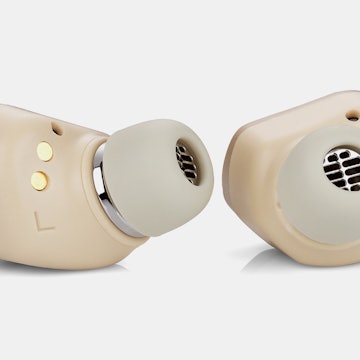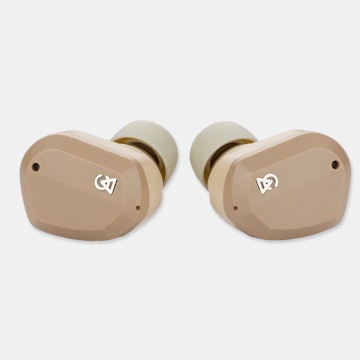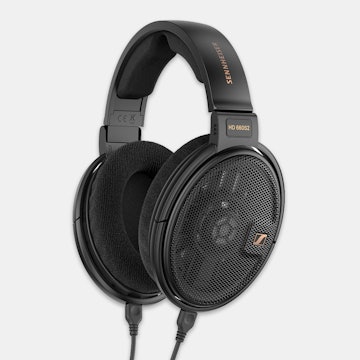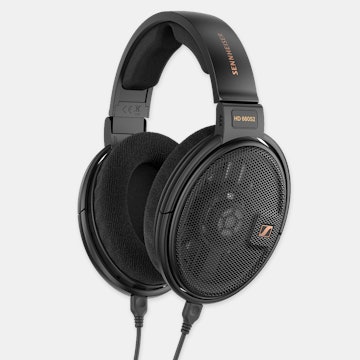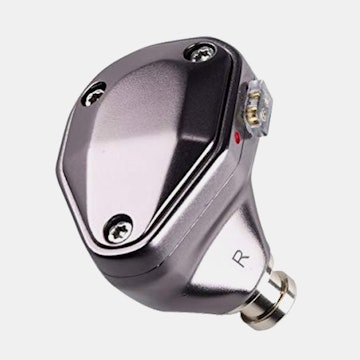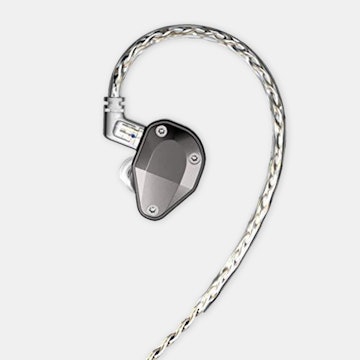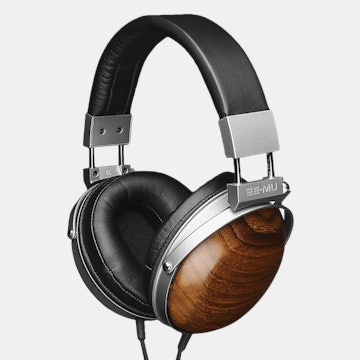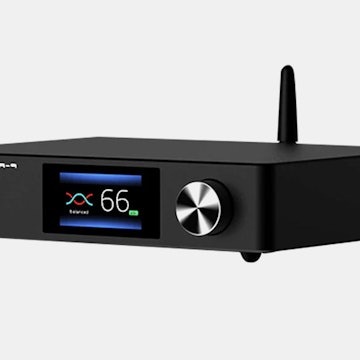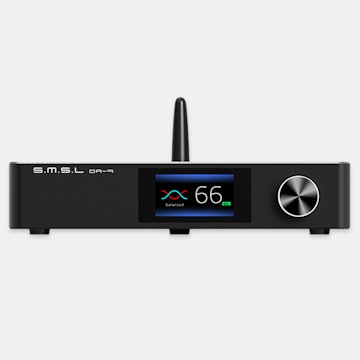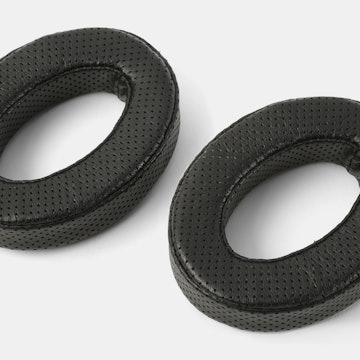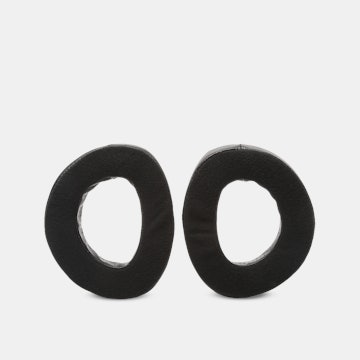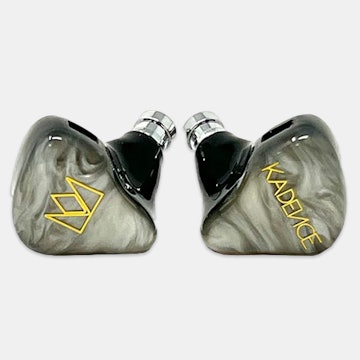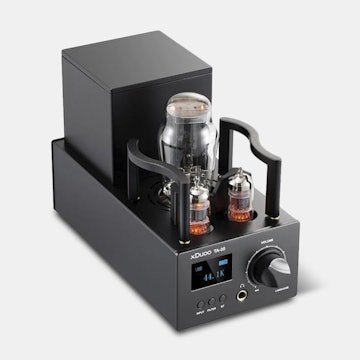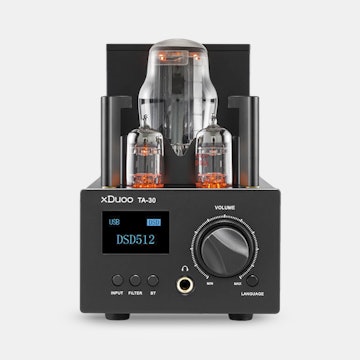Click to view our Accessibility Statement or contact us with accessibility-related questions











Showing 1 of 130 reviews about:

Multiplex
24
Mar 4, 2020
My super long-winded DROP+Audio Technica Carbon VTA review...

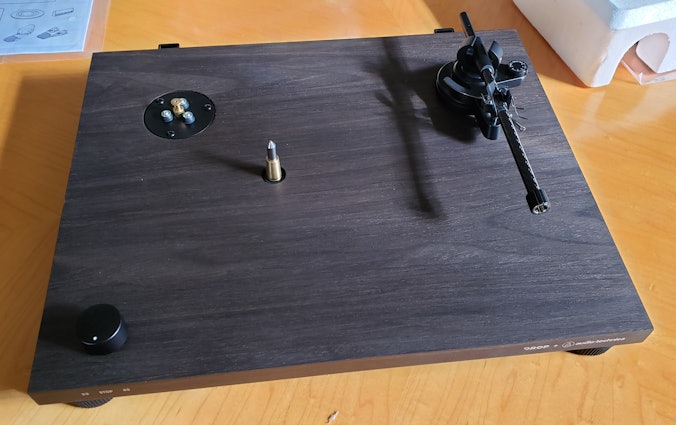
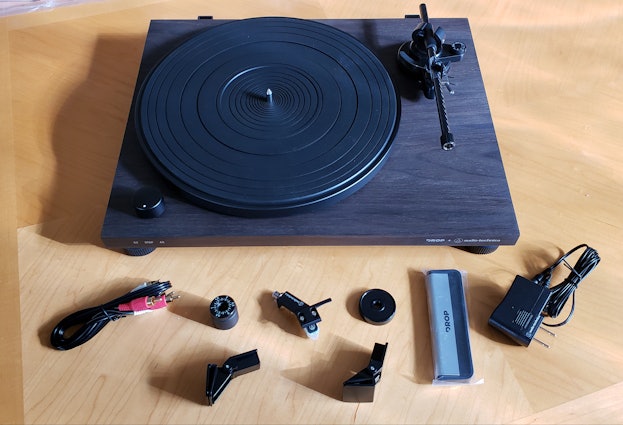
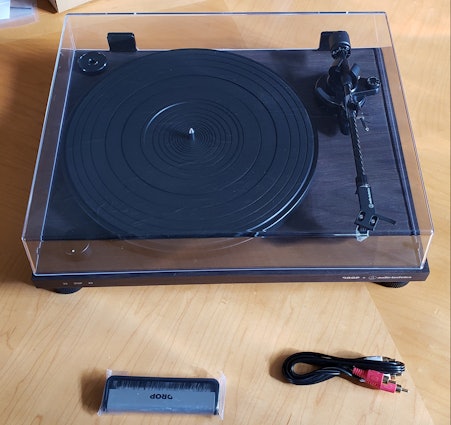
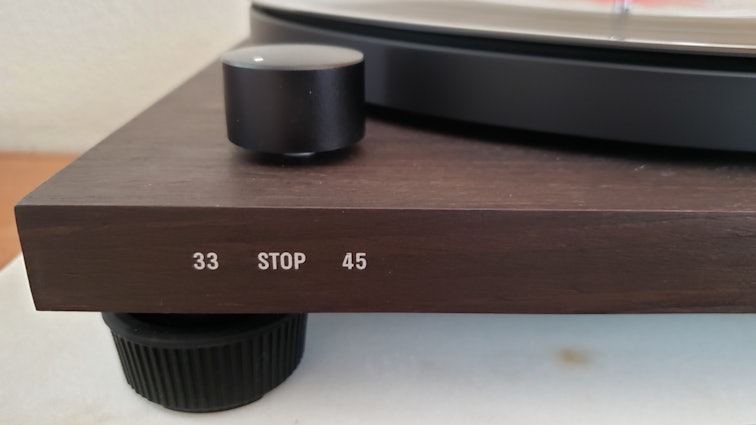
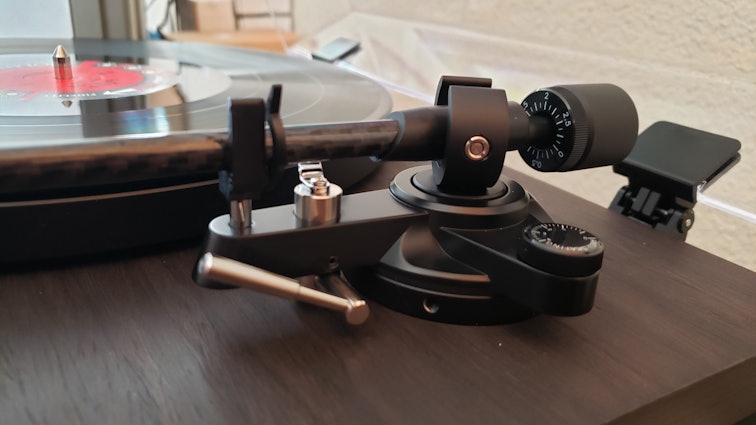
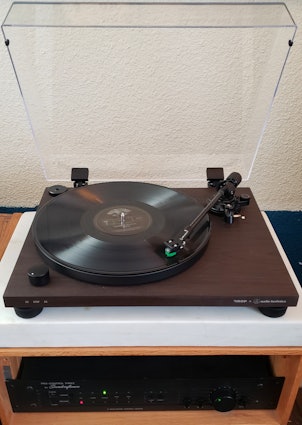
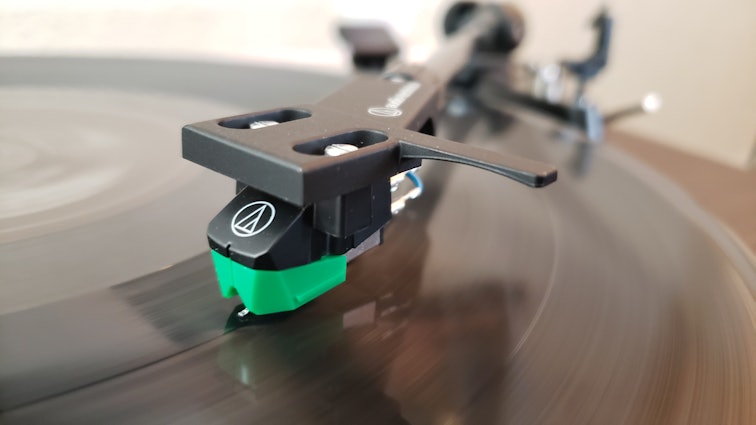
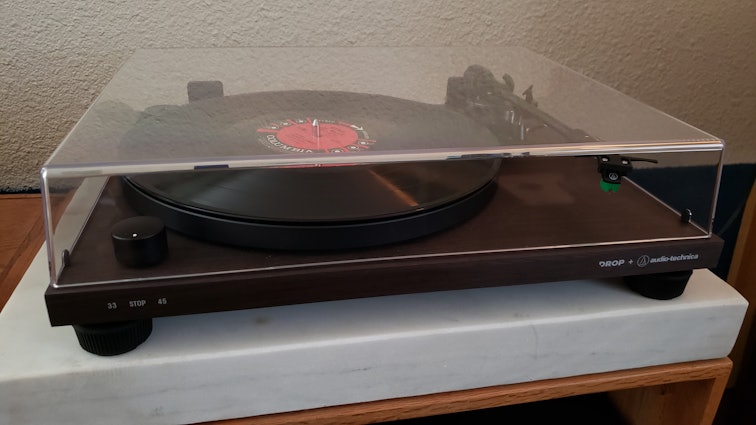











(Edited)
rhpot1991
228
Mar 4, 2020
bookmark_border
MultiplexThe instruction manual is available here now: https://docs.drop.com/AT-LP-DCVTA-EB_user_manual.pdf
I seem to recall seeing verbiage somewhere about the motor adjusting speeds as needed, might have been on the LPW40WN specifications.
Lastly in addition to the Microline stylus they have a Shibata for $20 more, steals for stylus upgrades.

Multiplex
24
Mar 4, 2020
bookmark_border
rhpot1991Thank you for that. I will have to take a look at the manual.
As far as the stylus goes, the ML seems to be the "sweet spot" in value. It is the slimmest profile; which will yield the most detail. It boasts a longer lifespan, as well. The Shibata is close in performance, perhaps a bit warmer in presentation from the examples I've heard. Slightly less extended top end. It has a shorter advertised lifespan. I personally don't think it's worth the extra bucks, but it's all about personal preference.

Multiplex
24
Mar 6, 2020
bookmark_border
MultiplexOne more thing... Found this 'table's 'hidden talent!'
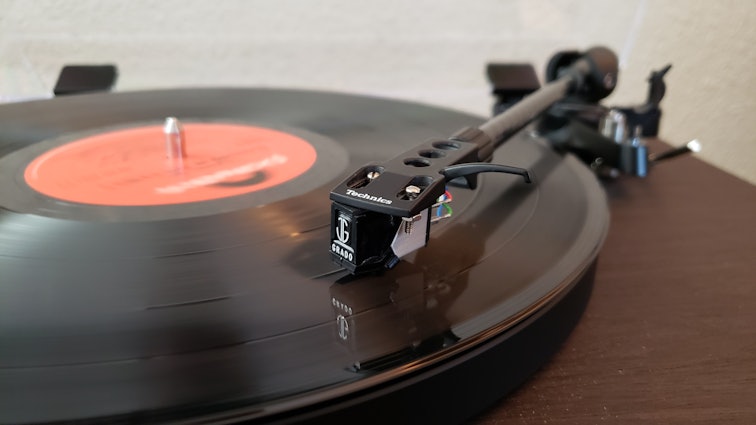

(Edited)

Nottagorilla
65
Mar 22, 2020
bookmark_border
MultiplexI've owned both the VM95ML ("Micro-Linear", in Audio-Technica speak, aka "SAS/Super Analog Stylus" in JICO-speak, "Replicant" in Ortofon-speak, "Micro-Line" in Excel/Hana-speak, also "Micro-Ridge" in Shure-speak!... phew!) & VM95SH (Shibata) cartridges, bought both at the same time so I could directly compare them. As I suspected, the cheaper ML IS the better-sounding stylus! It's the better design, more modern, more advanced, more radical in contact profile (ratio of width to length) than the Shibata shape; which itself is VASTLY superior to a "mere" elliptical stylus. The ML tracks a bit better than the SH, sounds lower in distortion, & retrieves fine detail just that little bit better than the Shibata "SH" does. Working as a turntable setup tech for a High-End audio store, I have 40 years uninterrupted experience with turntables (I own over 40!) & phono cartridges (if I haven't heard it, it's because it doesn't exist :) & we are a proud A-T dealer. We also brought in the considerably more expensive VM540ML cartridge (as you can guess by the suffix, also "Micro-Line" equipped) that got a rave-review in The Absolute Sound high-end audio magazine. IT has that "vintage" Audio-Technica sound, too thin in tone with obvious excess brightness/treble lift! But the VM95 series, ALL of them, DO NOT have this characteristic Audio-Technica flaw & therefore SOUND BETTER than the VM500 series (& probably the still-even-more expensive VM700 series, OY!) as a result! It appears that the VM95 series are based off the fabulous & now-discontinued AT95 series, which only came with either a crappy spherical stylus (95C) or a "bonded" elliptical (AT95E). Except for Audio-Technica's seemingly cynical change of the shape of the stylus "grip", it seems that the VM95E is identical with the AT95E GIANT KILLER cartridge that came before it. Having set up around a half-dozen VM95E's in just the last couple of months alone, I can vouch for the superior sound, AND tracking ability, of this remarkable cartridge. No doubt it's the star of this sweet little package. I have noticed no obvious limits to its' tracing abilities as described in one of the previous reviews; as quality control from Audio-Technica is FLAWLESS in my experience (notwithstanding the long-gone hand-made Signet line, which was alot of defective crap!), unlike other brands our store sells (Ortofon, Grado, Nagaoka...all pretty good, but not A-T perfect!), I lay blame at either:
- Groove damage from previous turntables, tracing/tracking damage is PERMANENT if you hear it even ONCE.
- Improperly setup (OK, I'm biased here. Pre-packaged, pre-set turntables take a dollar out of my pocket...but you DO get what you pay for!).
- Most worrisome, on a cheap turntable tonearm bearings can be of insufficient quality to negate excess friction, causing varying degrees of excess audible distortion, groove damage, accelerated groove AND stylus wear...
Better the tonearm rattles around a wee bit than be particularly snug; this means the bearings haven't been overtightened which would greatly magnify this problem (like vintage Ito tonearms fitted to Harman-Kardon T-series & many overrated RUBBISH Linn TURDtables fitted with "Basik" or even "Ittok" tonearms; I know, because I own this CRAP!)
A few other tidbits:
- I recommend a bit extra VTF to sweeten the sound & help the tracing a bit. ALL VM95 models prefer 2.2g to the "nominal"/"rated" 2.0g
- The HS4 headshell may be removeable, but it's also non-standard. Why doesn't this table have a curved tonearm with the standard SME-style headshell like Technics & most other Japanese tables? Building up a collection of HS4 headshells at $20-30ea. that you won't ever use on any better turntable (like the LP120 series, HINT HINT) is a non-starter!!!
- Isn't the LP120 cheaper? It's a better turntable, no shitty belts & no lousy 0.15% wow & flutter rating thanks to Direct Drive , has 78rpm, excellent pitch control via a large slider, more substantial overall construction...and ALSO comes set-up from the factory with an included VM95E cartridge???
Oh, what's all the fuss about "VTA"? All I see is a small hex bolt on the arm pillar so I can loosen & move the tonearm pillar by grabbing at it with my grubby meat-hooks & fiddling with it & then re-tightening the hex key...I mean, better than NOT having this ability; but nobody will use it on a cheapie "beginner" table like this one anyway. Hardly a "novel Drop USP"!!!
So just...give us a cheaper Drop LP120 direct-drive, willya?

Multiplex
24
Mar 22, 2020
bookmark_border
NottagorillaAs far as cartridges go, I would agree that QC is excellent across the AT line. The VM95E is no exception. It’s detail is quite decent, and tonal balance is very good. But as far as tracking and distortion is concerned, it definitely isn’t the last word. My copy was aligned perfectly in the Audio Technica headshell, right out of the box. I checked that before I dropped vinyl on the platter. I don’t always trust factory setups either, but this one was dead on. I also verified VTF. As far as occasional haze, mistracking, and sibilance goes, it’s minor, but it’s definitely there. Yet, I wonder if the VM95E is reaching it’s full potential in this setup?
There is one thing that really hasn’t been discussed much with this rig, and that is effective tonearm mass vs cartridge compliance. I don’t know the exact tonearm mass spec for this model, but it strikes me as mid-light. The VM95E is a fairly low compliance cartridge for hi-fi use, so it should technically be happier on a mid-high mass tonearm. I kind of have a feeling that this cartridge and turntable aren’t quite the ideal match. You would think that the manufacturer would factor in these variables and attempt a closer match, (particularly since the same manufacturer makes both the cartridge and the TT,) but such is the story of turntables, going back decades. Back in the late 70’s, commonly available mass-market turntables with higher-mass S-arms were often being mated to the super high-compliance cartridges that were trendy then. Cartridge brands like ADC, Empire, Shure, and Stanton were all in on the super-high-compliance game back in those days. Most Japanese turntable manufacturers were behind the curve in the light tonearm game, so there were frequent mismatches, sometimes right out of the box. Then in the early 80’s, it would seem that turntable manufacturers finally trended towards making low-mass straight tonearms using more exotic materials like graphite, and the such. About that same time, heavier-tracking lower-compliance moving coil cartridges started to gain popularity. Again, the two didn’t always make for a great match, yet many high-tech new turntables with light arms were paired with MC’s. You can’t win, it seems. In the case of the VM95E, a heavier tonearm like that of a Technics SL-1200, or possibly the AT LP-120 probably would be a better match for this cartridge mass-wise than the Carbon VTA’s. (Unfortunately the ML stylus will not overcome this mismatch on the Carbon VTA, as it’s compliance spec is right there with the E. But it will drastically improve performance overall, and is an absolute steal for what it is.) But don’t let me have you thinking that the VM95E doesn’t work well with this arm. It still performs quite well, perhaps just not quite ideally. Perhaps a little bit of weight added to the headshell would help, I don’t know. Haven’t tried.
But as I posted above, I did try the Grado Black2 cartridge. The Carbon VTA tonearm plays exceptionally beautifully with a Grado cartridge. The Grado is a far higher compliance cartridge than the AT, and therefore likes a low-mass arm. No haze, sibilance, mistracking. Funny, since Grados tend to be finicky and have a reputation for having these issues when they are not happy. They don’t perform great, for example, on a Technics SL-1200 tonearm. Yet, they really sing on this turntable, and reveal that the Carbon VTA has more potential than you would ever know just by hearing the VM95E. It would shock you, in fact. And I’m in no way trying to push Grado... Higher compliance cartridges by other makes will likely yield a similar result.

NTTD
75
Mar 30, 2020
bookmark_border
MultiplexYou have any familiarity with the Fluance TTs?
I'm wondering how this compares to the RT83 which is the same price and has an Ortofon Red?
I know the Fluance TTs are said to soon have the option to upgrade the platter to the acrylic one that comes with the RT85.

Multiplex
24
Apr 4, 2020
bookmark_border
NTTDUnfortunately, I have not had the opportunity to compare them. For me, the RT-85 would be the obvious choice if I were to go with Fluance. The Ortofon 2M Red is “meh” at best. Though the RT-85 costs quite a bit more, it is still a good bang-for-the-buck upgrade over the RT-83 with the addition of the 2M Blue. The Blue is a top shelf nude elliptical cartridge.
However, the Carbon VTA’s AT VM95E cartridge is the king of affordable upgrades... An upgrade to the ML (microline) stylus would put it into a class well beyond the 2M Blue. (And it’s worthy of mention that the 2M Red/Blue body tops out at the Blue. If you wanted a better tip than an elliptical with the Ortofon, you’d have have to go with a Bronze/Black stylus, which requires replacing the entire cartridge. The internals are different between lower and upper-end classes. That’s big $$$.) I expect that the RT-85 will be more “speed-stable” and possibly more a little more immune to external resonances with it’s acrylic platter, but I would still love to compare it to the Carbon VTA with an AT VM95ML cartridge. Without hearing them side by side, I honestly can’t say which I would prefer.

Nottagorilla
65
May 6, 2020
bookmark_border
MultiplexIf I haven't said it already, I fundamentally agree with your conclusions; just not quite all of them! Amongst my turntable & cartridge collection (& the many continuous decades of experiences), I still have a few Bang & Olufsen machines in both radial & linear-tracing tonearm configurations (Models RX & TX). The B&O MMC1 & MMC2 were THE best cartridges in their day, I wanted for no others, not even the exotic Koetsu (Onyx Signature) nor Kiseki (Agate Ruby) MC cartridges I had auditioned on far fancier tables (like my Michell Gyrodec...). The Designer of the B&O cartridges had a career of over 30 years, maybe 40; in that time he designed THE finest magnetic generator system (the MMC designation stood for "Moving Micro-Cross"). Fully symmetrical, with the widest frequency response of ANY magnetic cartridges in its final iterations. He created a new improved stylus profile as an upgrade to the Shibata, it was called "Contact Line". I thought it sounded a bit better, & traced ALOT better in his MMC1 & 2 designs. He pioneered the use of sapphire as a cantilever system, Bang & Olufsen were the first to use one in 1977's MMC20CL. The later MMC1 & 2 were upgraded to HOLLOW sapphire cantilevers & became even smaller & lighter yet. Tolerances were so strict that the cartridges had to be assembled in one piece like a Moving-Coil (non-removeable stylus system) in a dedicated Clean Room facility! The resulting cartridges were the smallest & lightest weight ever made: just 1.7g! The Designer, Dr. S.K. Pramanik, also designed all B&O's turntables, along with B&O's cassette decks, culminating in the Model 9000 that the widest frequency response of any cassette deck ever made (10-25,000Hz +/-3db w/metal tape) thanks to the use of Dolby HX...which he ALSO invented! B&O then gave the patent to Dolby Labs, in exchange for undisclosed considerations...All this to say, Dr. Pramanik was an Audio genius, particularly in the areas of analog reproduction technology. And even those flashy, rattly little chrome wedge turntables of his had some amazing engineering in them: a fully-tuned, floating 3-point suspension, magnetic-induction (motorless!) drive on the flagship, & clever platters that were EXACTLY weighted & tuned to self-damp both themselves & the LP sitting on them! Fully automatic, made in Denmark, & starting at just $250 in the early-mid 1980's! Dr. Pramanik designed EVERYTHING in B&O's phono systems, he could set ANY & ALL parameters to what his genius knew was optimal. And he did! And I tell you all this to demonstrate what a singular genius the man was, a leader & NOT a follower.
And when it came to setting the compliance on those teeny-tiny phono cartridges, the smallest & lightest EVER made...he didn't go nuts on the compliance. They traced at a mere 1.0g, +/-0.1g rated, yet they had a static compliance of just 20cu (30cu dynamic rating)! The tonearms were ultra-low friction designs, the radial arms were unipivot in the vertical plane out of cost constraints on the cheaper tables. The arms were ultra-thin, but solid; made from a stainless-steel pipe to keep them quiet, but small enough to have an effective mass in the 5g range! Dr. Pramanik's target resonance frequency? 14Hz!
Since I used his turntables & cartridges for many years before I could afford more pretentious "Hind-End" BULLSHIT audio components, I discovered that his reasoning for this "higher-than-everyone-else's" 14Hz resonance was not only smarter than everyone else, but both sonically AND operationally better than everyone else, too!
And you are worried about an 11Hz fundamental resonance? And you want it lower???
To do...what? To better amplify warps? To make tracing of off-center & sharply-warped records both more audible, & less easily played? So you can waste amplifier power overdriving your woofers, so you can "enjoy" all the unnecessary distortion & loss of maximum volume that entails?
If a genius with Dr. Pramanik's record, with his Doctorate Degree(s) in Engineering, or Physics (or both!), sets 14Hz as his ideal frequency, I think we should sit up & pay attention! The ONLY sacrifice in setting a tonearm/cartridge fundamental suspension resonance at too high a frequency is simply this: The bass rolls off in the "audible" range. THAT'S ALL. It has nothing to do with tracking ability; in fact, the reduction in warp & off-center sensitivity due to the further reduction in inertial mass HELPS tracing ability! Note Dr. Pramanik chooses 14Hz: high enough to give those benefits I have experienced for myself (being able to play ridiculously warped records with NO audible added wow AT ALL, & zero! Nada!No Thing! visible woofer movement, with no subsonic filter in the phono stage!!!), and yet still a low enough frequency that I hear NO bass rolloff. At all! The lowest notes in Rock Music are around 40Hz, only in Organ Music or some freaky EDM (which I also listen to, btw) might you get down to 30Hz. Frankly, NOBODY presses frequencies much lower than about 35Hz on vinyl; they have to sum it to mono below around 60Hz or so, because the mastering engineer knows your cheapo turntable can't handle it, & his customer, the record company, doesn't want "unnecessary" return requests for a "defective" LP from all the Crosley-spinning DumDums out there! Does the 14Hz resonance roll off the bass by even a single decibel more than 10Hz does? And if there's nothing pressed in the grooves at even triple that frequency, why invite in a bunch of extra rumble? Even the best, stonking JL Gotham subwoofer isn't flat down to 20Hz; it's job is just to make sure you're dead-flat at the lowest frequency you might find in music. I have a friend with $100,000 Wilson Audio WAMM's, & they can go down to the nether regions with consummate ease. The effect is actually NOT hearing low notes louder than ever before; so much as it is, with certain classical recordings at least, the sensation of "feeling" the enormous space of a great concert hall (Kingsway Hall or Carnegie Hall perhaps). You "feel" the subliminal subsonics of the air conditioning system, or for Kingsway Hall, the occasional passing subway train! Again, the effect is much more convincing with CD's...they roll off the lows on LP's!
I am happily using my VM95ML in a highly-modified Dual 505, which has a 5g effective tonearm mass. My speakers go down flat to around 45Hz, I hear NO loss of bass compared to hearing this cartridge in my Technics SL-220 (15g effective mass).
The only other point is maybe to clarify our terminology about what constitutes mistracking, but what you've said to describe what you're hearing still sounds like SOMETHING IS WRONG.
Yes, the better stylus shapes track better, when everything else is equal. But the difference between the tracking ability of a typical VM95E vs. a VM95ML isn't all that dramatic. What is more audible is that the sound is just less "fuzzy". Especially in the highs, especially when the groove modulations are heavier, & definitely in the grooves nearer the label.
But you should never hear a VM95E "break up". That's something that shitty Moving-Coil cartridges do, like Denon 103's, ZYX's, Linn's, Supex's, or Ortofon SPU's & spherical EMT's. Not "real" cartridges, not a good cartridge like a $40 Audio-Technica!

Multiplex
24
May 27, 2020
bookmark_border
NottagorillaI can see what you are saying... But I’d have to wonder, just because B&O did something novel, does it mean that it will apply perfectly in every situation? B&Os were very cool, but also kinda proprietary and weird. I can’t help but think that if you control all of the variables, you can have pretty tight control over the outcome. It’s kind of like Bose speakers. They can sound quite good when used with their proprietary equalization. When not, remember the saying, “no highs, no lows... Must be Bose?” My thoughts are, turntables can become quite the complex ballgame when you mix and match different cartridges, styli, and headshells of different weights and compliance specs from various manufacturers. The ability to do this is one of the wonderful things about the DROP Carbon VTA. But there can be pitfalls...
For the most part, a 14Hz resonance would be considered a mismatch. It’s not that it’s an audible frequency, but it's resulting mismatch can cause exaggerated motions that can sometimes be heard as mistracking, a modulated warble, or even seen as “dance.” We know that at too low of resonant frequency, a warp can easily send a stylus out of the groove, but I’ve also seen the same happen if the resonant frequency is too high. Usually, the issue isn't quite that extreme or apparent, though. It may simply manifest as a dull, lifeless or bloated sound overall. Either way, it's not the way I'd prefer to set up this turntable.
Now, I'm not saying that mismatches have been uncommon throughout the history of vinyl playback... Actually, it's quite the opposite. Think about all of the Shure V-15 and ADC XLM users that mounted them to boat anchor S-arms during the 70's. It's the opposite, yet equal problem that the VM95E has in this 'table. They usually worked, and sounded alright. They just never quite worked optimally.
Another thing you mentioned that I'd like to address, is that the reason that mastering engineers sum low frequencies to mono isn't just because of cheapo turntables... It's because of limitations of the format. A low frequency out-of-phase waveform of adequate amplitude will actually lift the cutting head upward from the lacquer blank. It can make the groove so shallow that it no longer falls "in spec." If it gets bad enough, no stylus could possibly ride in it. Apply enough power to the cutting head, and the groove will disappear completely! That's why summing is done. Vinyl playback is incredibly enjoyable, but it does suffer from a handful of technical limitations... some of which probably add to it's euphonic nature.
I'm sure we've been talking over the heads of many readers... I have no doubt you understand tonearm resonance, Nottagorilla, but others here may not. Compliance/mass matching is important, so I'll try to draw this up as an analogy that a layperson can more easily understand.
I like to think of tonearm resonance like a trailer being towed behind a truck... The weight capacity of the trailer is similar to a cartridge's compliance. Cartridges that are high compliance tend to track lightly and have a delicate touch. They would be like a small, lightweight trailer. Low compliance cartridges are heavy trackers, and can usually take some rough handling, say, like a cartridge for a clunky changer, or for DJ use. They would be like a beefy trailer that can haul big, heavy things. The tonearm is like the load. The higher the effective mass, the heavier the load. So here's how it works: if cartridge compliance is too high, or if the tonearm mass is too high, it’s like a very overloaded trailer. It will rock and sag, and tend to bounce all over when hitting bumps. If you see that trailer swaying it’s way down the road, chances are you won’t get too close. It will look dangerously unstable- similar to a tonearm operating at a resonant frequency of say, under about 7Hz. That's a considerable mismatch. On the other hand, if the compliance is too low, or if the tonearm is too light, it will be more like a heavily sprung trailer that is nearly empty. It will tend to bounce and vibrate in short oscillations, slam into bumps, and may even go airborn if the driver hits a really big bump. That is more or less what most tonearms with a resonance at 14Hz or above are going to do.
10Hz is widely accepted as the best compromise. It is incorporated into the design parameters of most tonearms, because it is a frequency that is out of the audible spectrum, and tends to be less excited by pressing imperfections and warps. Maybe this doesn’t apply to B&O, but usually, if you are at or near 10Hz, you are in the most ideal frequency range. It’s like towing an appropriately loaded trailer, suspension matched to load, tracking smoothly behind the towing vehicle.
Of course, that’s a bit of an oversimplified example... Another variable worth considering is damping. Is the tonearm damped? Is the cartridge suspension damped? Damping is like adding shock absorbers to the trailer. As shock absorbers help a trailer not vibrate and bounce, damping helps absorb energies in the tonearm system that are unrelated to playback. It helps widen compatibility between cartridges and tonearms.
In the case of a B&O cartridge, it may be well damped enough to not go out of control, despite it’s resonance at 14Hz. I don’t really know. (Though, I have an MMC20CL cartridge with a 1/2” adaptor, and it doesn’t seem to be wild about drastic mismatches either. It does work well enough on a B&O tonearm, but the trick seems to be finding an entire B&O TT that still works well enough. They don’t seem to age as gracefully as some, in my experience... But I digress...) Some cartridge manufacturers, Grado probably being the most notable offender, tend to believe that damping changes the sound. They believe that a very underdamped suspension leads to a very relaxed, open sound, and overdamping can sound strained or boxy. I would tend to agree... But underdamping makes for a very finicky cartridge. They tend to bounce, dance, skip, distort, sound muddy, etc., when there is a mismatch one way or the other. That’s what is so unique with this turntable and the Grado Black2. There is little to no damping, yet the tonearm and stylus do a great jobs keeping their composure. It is quite the synergistic match. I would consider it to be similar to the properly loaded trailer analogy. It doesn't bounce, sway or jitter.
In my case, maybe 10Hz wouldn’t actually be better than 11Hz. Hard to say without trying, and I honestly haven’t. It should be better on paper, but sometimes the real world can be quirky. I’ll give you that.
In the case of the AT VM95E, it is a low compliance cartridge, at least as far as hi-fi MM’s are concerned. No doubt about that. The tonearm of the DROP Carbon VTA weighs in at the the lighter end of mid-mass. Not exactly a match made in heaven on paper... The VM95E does, however, seem to be fairly forgiving. The suspension is probably damped enough that it works well enough for this tonearm. Does that make it an ideal match? Meh. It’s similar to installing shock absorbers on the nearly empty heavy-duty trailer. It helps a lot, but it would be even better if that trailer had an 600 pound load of topsoil riding in it instead of 40 pounds worth of plastic patio furniture. That’s all I’m saying.
(Edited)

Nottagorilla
65
Jun 9, 2020
bookmark_border
rhpot1991Don't waste your money on the Shibata stylus version (VM95SH). It's excellent in & of itself, vastly superior to the bonded-elliptical VM95E that comes with the LP40 table, as the price jump implies.
However! I bought both the Micro-Line & Shibata versions because:
1) I work as the turntable setup tech for an authorized bricks & mortar dealer, so I got 40% off list prices which made this "experiment" affordable to me.
2) I had a strong suspicion, based on past experiences & knowledge, that the Micro-Line stylus would (should!) perform better than the fatter, older design, broader contact profile of a Shibata stylus.
Sure enough! The lower-priced ML sounded & traced just a little better than the SH in the direct comparison. To further insure the correctness of my verdict, I swapped stylii in the same body to ensure the magnetic system (body) of the cartridge wasn't affecting what I was observing.
Virtually every other manufacturer charges more for a Micro-Line type stylus; in fact Audio-Technica is the only company that I know of that does, or ever has, for that matter.
Ortofon (their "Replicant" stylii are Micro-Line equivalents), Hana, JICO (aftermarket Japanese company that offers replacement stylii for discontinued cartridges like Shure & Technics, not to mention A-T; offer their own superb "SAS"/"Super-Analog Stylus"/ Micro-Line stylii as their top offering. I own a couple for Shure cartridges, I heartily endorse them as well!),
are just 3 companies that immediately come to mind as examples of typical pricing heirarchies based on stylus quality that put Micro-Line above Shibata.
I think Audio-Technica was the first company in the world to offer Shibata stylii in mass-quantities way back when (the design is from 1974!), perhaps they were even actively involved in its initial discovery/creation.
I therefore suspect that they have a romantic attachment to their "baby"; something that the rest of us can cheerfully thumb our collective noses at.
And save money. And get something that traces a bit better. That has slightly lower audible distortion at ALL groove velocities. And that has slightly better resolution/transparency of sound as well! Your records will thank you, too; with further reduced groove wear!

Nottagorilla
65
Jun 9, 2020
bookmark_border
MultiplexWell!
There's a fair amount to unpack in your attempt to clarify the cartridge compliance (cantilever suspension "floppiness") vs. Tonearm "effective" mass (not to be confused with real/total arm mass which is a non-issue for this discussion).
Then there is the business of damping; which is either designed-in to the cartridge's cantilever suspension, or is added externally to some of the fancier tonearms you see in the form of a trough or "vat" of gooey, messy, & unwantedly-mobile silicone oil (it has properties that give it an ability to just "creep" away from where you put it, & make a f***ing mess all around the tonearm. Usually seen seeping out of damped cueing lift mechanisms on a crummy recent Thorens TURDtable like TD203 & 309...).
As you may gather, my opinion of external damping to compensate for cartridges that are poorly designed to begin with is very low.
Working for a Grado dealer, I have experience with the Black & Green models & have several vintage F & G series models in my junk collection of 100-odd cartridges...
Other than ongoing issues of shabby American quality that has always dogged Grado (to their credit, QC is MUCH better than it ever was. Problem is, so is everyone else's!), their current products at the low-end of their line are VASTLY better than CRAP like the late, rave-reviewed by idiots who would never stoop to using it themselves as a "daily driver" (like the rave reviews for the AWFUL-sounding Rega RB250 & 300 tonearms!).
The 1970's predecessor to the Grado Black you own is the FTE+1: plainly a piece of ship, if you get my drift.
I owned it, bought it based on the raves of a Hind-End Fraudio Crapazine that you're sophisticated enough to be familiar with: "The Absolute Sound" (Absolute Clown is closer to it, IMHO).
The great audio God Joe Grado didn't believe in anti-skating compensation/adjustment, just as another slop-dick New York turntable maker Harry Weisfeld (VPI) also is too lazy/deaf/stupid to bother with.
On top of telling the customer not to bother with anti-skating compensation for the FTE+1, he also LIED about the recommended tracing force for this POS: 1.5g
Application of that recommendation resulted in gross mistracking & instant groove destruction of even modestly-loud groove modulations.
Farting around, the very lowest VTF that gave barely-acceptable results was 2.25g.
2.5g was best, but what little detail this CRAYON stylus had was further diminished by more dulling of its rather-limited treble extension...
Your "Black" cartridge sounds like it a actually might have a true elliptical stylus, unlike the "twin tip" paralleled-conical shape those old F & G series carts had.
The cantilever is noticeably thinner & better made; no longer dingy & dull-looking, often with little dents visible along the length!
Still, the Black & Green models I've worked with have noticeably sloppy (off-center) positioning of the stylus shank on the flattened portion at the end of cantilever. Doesn't seem to affect the sound, but the Chinese-made VM95E for half the price has NO such obvious tooling-related problems.
The basic design of your cartridge is now 55 years-old, & probably made from much of that horribly tiref

